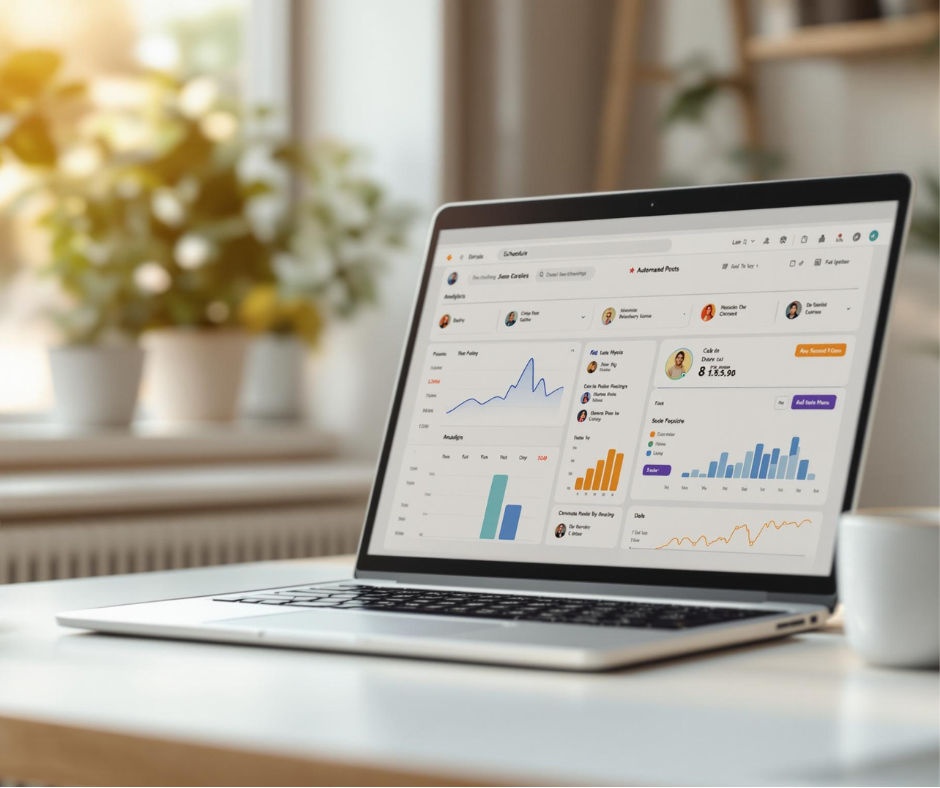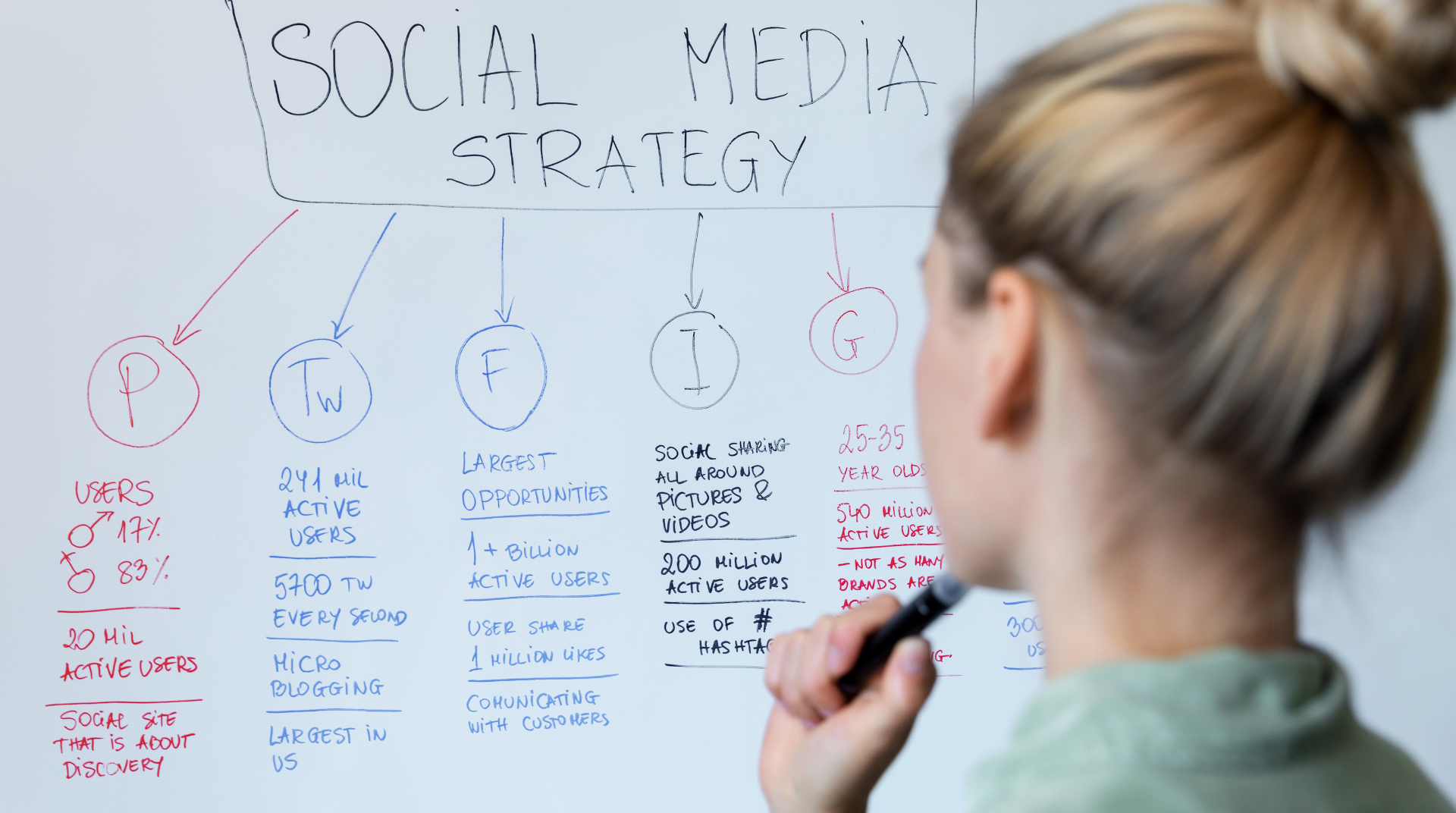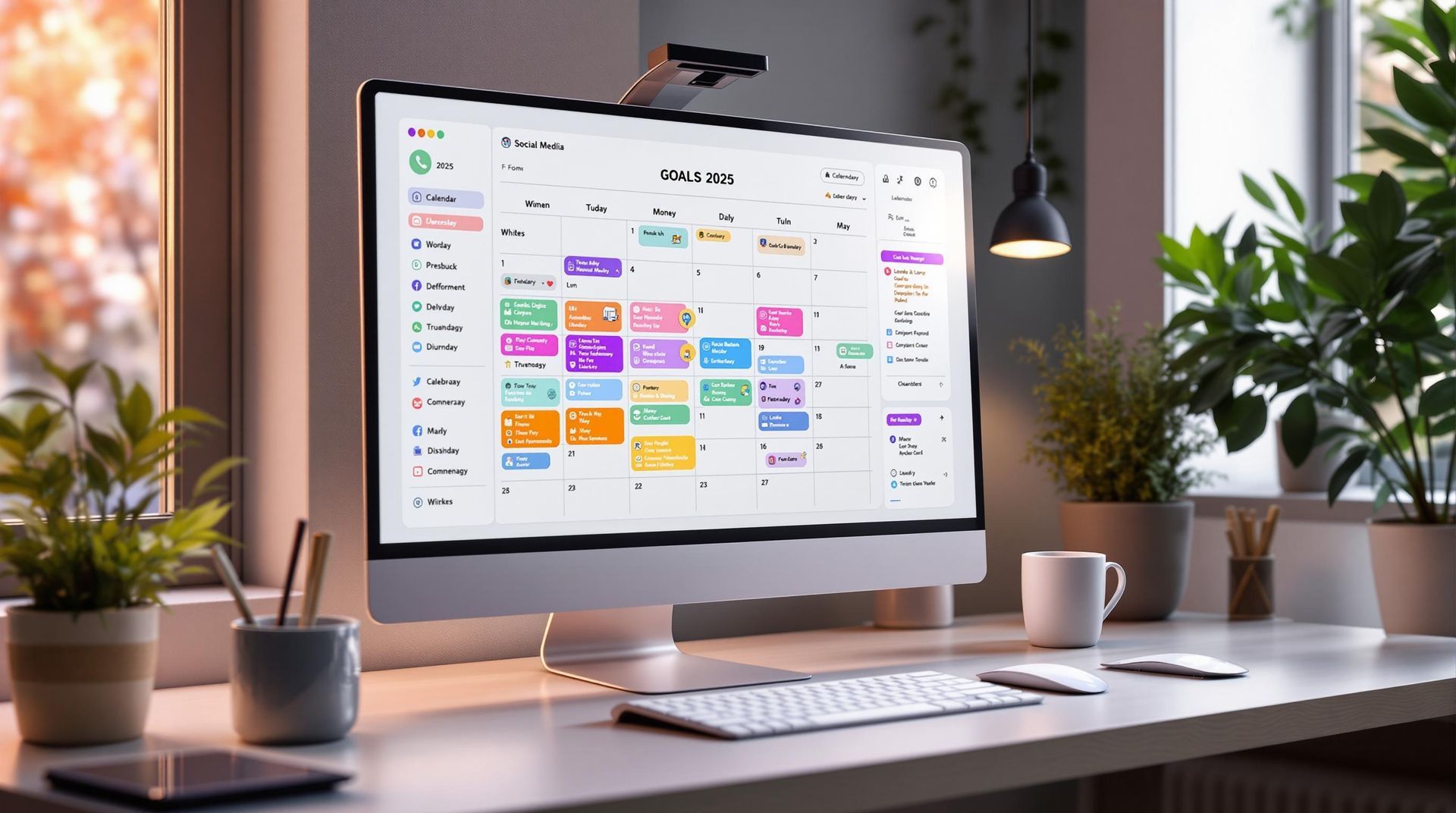AWHITNEY DIGITAL MARKETING
Digital Marketing Budget Guide: Planning for 2025
November 25, 2024
Digital Marketing Budget Guide: Planning for 2025
Planning your digital marketing budget for 2025? Here's what you need to know:
- Spend 5-8% of total revenue on marketing
- Allocate 56% of marketing budget to digital channels
- Use 70-20-10 rule: 70% core activities, 20% growth, 10% experiments
- Set aside 10% for unexpected opportunities
Key focus areas:
- Search marketing (SEO, paid search)
- Social media (short videos, in-app shopping)
- Content marketing (AI-assisted, human-created)
- Email marketing
- Video marketing
Top tools and trends:
- AI for personalization and automation
- Data privacy compliance
- Green marketing initiatives
To maximize your budget:
- Set clear SMART goals
- Use analytics to track performance
- Focus on high-ROI channels
- Stay flexible and adjust as needed
Related video from YouTube
Digital Marketing Spending in 2025
Let's talk about where digital marketing spending is headed in 2025. Tampa businesses need to know this stuff to stay competitive.
How Much Companies Spend
Company size and revenue play a big role in marketing budgets. Check this out:
| Revenue Range | Marketing Budget Percentage |
|---|---|
| Less than $10 million | 15.6% |
| $10-25 million | 12.2% |
| $26-29 million | 10.2% |
| $100-499 million | 9.5% |
| $500-999 million | 7.3% |
| $1-9 billion | 7.2% |
| Over $10 billion | 11.3% |
Smaller businesses are spending a bigger chunk on marketing. Why? They're fighting to get noticed in a crowded market.
Market Changes That Affect Budgets
Four big things are shaking up marketing budgets:
1. Digital Takeover
In 2022, companies put 56% of their marketing money into online channels. That number's only going up.
2. Economic Rollercoaster
Some companies are spending MORE despite tough times. It's a gutsy move, but it worked for Kellogg's during the Great Depression.
3. AI's Big Entrance
AI tools are changing the game. Trevin S., WebFX VP of Marketing, says:
"Gen Z is using AI to find info. Getting visible on these new platforms gives you a head start."
4. Skill Gaps
A whopping 58% of CMOs say their teams can't handle their strategy. This might mean more spending on training or hiring Tampa marketing agencies.
Measuring Budget Success
Want to know if your 2025 marketing budget is working? Watch these:
- ROI: How much money are you making compared to what you're spending?
- Customer Acquisition Cost: How much does it cost to get a new customer?
- Conversion Rates: How many leads turn into customers?
- Channel Performance: Which digital channels work best?
Recent data shows:
- Website/Blog/SEO: 16% ROI
- Social Media Shopping Tools: 16% ROI
- Paid Social Media Content: 14% ROI
- Email Marketing: 14% ROI
- Content Marketing: 14% ROI
Keep an eye on these numbers and be ready to switch things up.
Dan Posner from Big Leap says it best:
"I want to understand more about the business and some of the metrics in place. It's different for an eCommerce business versus a local versus a B2B business."
Your budget and metrics should fit YOUR business. That's how you'll win in 2025 and beyond.
How to Split Your Budget
Splitting your digital marketing budget isn't rocket science. But it's crucial to get it right. Here's how to divvy up your cash for maximum impact in 2025.
The 70-20-10 Rule
Ever heard of the 70-20-10 rule? It's a smart way to slice your budget pie:
- 70% for tried-and-true methods
- 20% for programmatic stuff
- 10% for wild experiments
Avinash Kaushik from Google puts it like this:
"70% of the time, we're going to focus on things that we know that are very core to our business. 20% is where we're trying to push the boundaries. You get into the known unknowns. The last 10% is truly crazy, experimental stuff. But with every success, you build a competitive advantage."
It's like betting on a sure thing while keeping some chips for the long shots.
Where to Put Your Money
So, where should your cash go? Here are the big players:
- Search Marketing: Google's still king. Don't skimp on SEO and paid search.
- Social Media: Facebook, Instagram, LinkedIn - they're all hungry for your ad dollars.
- Content Marketing: Good content is like a magnet for customers.
- Email Marketing: Old school? Maybe. But it still packs a punch.
- Video Marketing: Short videos are hot. Think TikTok and YouTube Shorts.
Want some numbers to chew on? Check this out:
| Channel | ROI | ||
|---|---|---|---|
| Website/Blog/SEO | 16% | ||
| Social Media Shopping Tools | 16% | ||
| Paid Social Media Content | 14% | ||
| Email Marketing | 14% | ||
| Content Marketing | 14% |
DIY or Hire Help?
Now, the million-dollar question: Should you build an in-house team or hire an agency? Let's break it down.
In-house teams aren't cheap. You're looking at:
- Marketing Director: $180,000 – $275,000
- Brand Manager: $110,000 – $170,000
- Digital Marketing Specialist: $60,000 – $100,000
- Social Media Manager: $55,000 – $75,000
- Content Marketing Manager: $80,000 – $110,000
Agencies, on the other hand, charge:
- Monthly retainer: At least $3,000
- Project-based fees: $4,000+ for web development
- Hourly rates: $75 to $120
In-house teams know your brand inside out. But agencies bring fresh ideas and specialized skills. Why not mix and match?
Nicole Thuemmel from WebFX says:
"A digital marketing agency can bring you full service resources for the cost of one internal salary."
The bottom line? There's no one-size-fits-all answer. It depends on your company's size, goals, and bank account. Think hard before you leap.
Top Marketing Channels for 2025
Digital marketing keeps changing fast. Let's look at the channels that'll matter most in 2025.
Search Marketing
Search marketing is still key, but it's not the same game anymore:
AI in Search: AI Overviews shook things up. They started big, showing up in 84% of searches. But by May 2024, that dropped to just 7%. This means SEO needs a new playbook.
OmniSEO™: It's not just about Google anymore. Companies are optimizing for voice search, image search, you name it. Cast a wide net.
Deep Dive Content: With AI handling the basics, you need to go deeper. Create content that shows real expertise. It's how you stand out from the AI noise.
Meg P. from WebFX puts it this way:
"For 2025, tap into your company's expertise. Weave it into your content. It's how you'll connect with people and drive conversions across search engines."
Social Media
Social media isn't slowing down. Here's what's hot:
Short Videos Rule: TikTok, Reels, Shorts - they're everywhere. Your brand needs to catch eyes in seconds.
Shop While You Scroll: Buying stuff right on TikTok or Instagram is big now. It's making ads work better for folks ready to buy.
Your Data, Your Power: With privacy getting more attention, using your own customer data for ads is crucial. Katie H. at WebFX says:
"The better your own data lists, the better your Lookalike audiences perform!"
Build a Tribe: It's not about followers anymore. It's about building a community that cares.
Content Marketing
In 2025, content marketing is all about trust and value:
AI Helps, Humans Create: Use AI for the heavy lifting, but keep your content human. Your brand voice matters.
Video is King: Live streams and short clips are still on top. They show off your brand's personality.
Learn and Laugh: Mix education with entertainment. Make learning about your stuff fun.
Keep it Real: People want the real deal. Let your customers share their stories. It builds trust.
Anna L. from WebFX nails it:
"Users want to know who your brand truly is."
Elevate Your Digital Presence
Partner with AWhitney Digital Marketing for expert SEO, targeted PPC campaigns, and comprehensive digital strategies to boost your business growth.
Making Your Budget Plan
Creating a digital marketing budget for 2025 isn't about blindly following trends. It's about smart planning and flexibility. Here's how to do it right.
Review Your Results
Start by looking at what's working now. Dig into your current marketing efforts and analyze the data.
Take HawkSEM's client Zephyr, for example. They had plenty of leads but struggled with conversions. By shifting their budget to creative assets and landing page optimization, they saw impressive results:
"Their cost per acquisition dropped from $300 to $50, and their click-through rate increased by 2.5%."
Look at your own numbers. Which channels are your top performers? Where are you getting the best ROI? Use this info to shape your 2025 plan.
Amy Owings, Paid Digital Media Manager at HawkSEM, offers this advice:
"I typically recommend that ecommerce brands put roughly 15%-20% of their overall budget to digital marketing, but this is largely dependent on the age of the brand."
Set Clear Money Goals
Next, set SMART goals: Specific, Measurable, Achievable, Relevant, and Time-bound.
For a SaaS company, a goal might look like this: "Increase customer acquisition by 30% through LinkedIn Ads by Q3 2025." It's specific, measurable,
achievable, relevant, and time-bound.
Your goals should align with your business objectives. Are you focusing on brand awareness? Lead generation? Sales? Your budget should reflect these priorities.
Backup Budget Plans
Don't fall into the trap of making a rigid budget. In digital marketing, flexibility is key.
Kristen Bellomo, Senior Project Manager at Pink Sparrow, shares her strategy:
"I always make sure I've planned for more labor than I need, because you never know what could happen. There are almost always unexpected costs, such as travel or shipping costs or last-minute permits or disposal costs. I always try to plan to have 10 percent more budget available than the minimum, just in case."
Here's how to create your own backup plan:
- Spot potential risks: Think economic changes, shifts in consumer behavior, or sudden cost increases.
- Estimate the impact: How much could each risk cost you?
- Plan your response: Be ready to shift budgets between channels or launch new campaigns if needed.
- Set aside a contingency fund: Aim for about 10% of your total marketing budget.
- Stay alert: Keep an eye on your key metrics weekly. If a channel underperforms, be ready to reallocate funds.
New Marketing Tools for 2025
The digital marketing world is changing fast. Let's look at what's coming in 2025.
AI Tools
AI isn't just hype anymore. It's becoming a must-have for marketers. By 2025, AI tools will be key for better campaigns and personalized content.
Take HubSpot's AI Marketing Hub. It's changing how SaaS companies handle leads. The AI scores leads based on how likely they are to buy and sends personalized emails automatically. You're not just reaching more people - you're reaching the right ones at the right time.
Then there's WEVO Pulse. It's great for online stores dealing with cart abandonment. It looks at the whole checkout process and finds where customers give up. One store using it cut cart abandonment by 15% in just two months.
For content, ChatGPT is leading the pack. Brands use it to keep their social media active. A fitness brand used it for "Motivation Monday" posts and saw 30% more engagement than their usual posts.
"Keeping up with these tools isn't just good - it's a MUST if you want to stay ahead."
AI tool prices can be all over the place:
| Tool | Starting Price (Monthly) |
|---|---|
| ChatGPT-4 | $20 |
| Jasper | $59 |
| HubSpot AI Marketing Hub | Custom Pricing |
Data Privacy Rules
By 2025, data privacy won't just be about following laws. It'll be a big part of your marketing plan. New laws are coming, so you'll need to rethink how you use customer data.
For example, New Jersey's new data privacy law starts on January 15, 2025. It's one of nine new state laws coming between late 2024 and 2025. These laws will change how you target ads and personalize content.
To get ahead, focus on building trust. Be clear about how you collect and use data. Make sure your website and apps ask for permission clearly. This isn't just about following rules - it's about building better relationships with your customers.
Green Marketing
Green marketing isn't just a trend. By 2025, it'll be a key way for brands to stand out.
The numbers are clear:
- 92% of people trust eco-friendly brands
- 81% of shoppers like green marketing better than regular marketing
To use this trend, try these ideas:
- Use eco-friendly packaging
- Use green web hosting
- Talk about what you're doing for the environment
Here's a success story:
A local organic store switched to green web hosting and recycled packaging for online orders. In six months, they saw 20% more repeat customers. Many said they came back because of the store's environmental efforts.
Green marketing isn't just good for the planet - it's good for business. The green tech and sustainability market could hit $62 billion by 2030. That's a big opportunity for brands that start early.
As you plan your 2025 marketing budget, think about these new tools and trends. They're becoming essential to stay competitive. By using AI, respecting privacy, and going green, you'll be ready to connect with your audience and grow in the coming years.
Tracking Your Results
Let's talk about tracking your marketing results. It's not just about spending money - it's about spending it smart. Here's how to measure your efforts and fine-tune your budget for 2025.
Measuring Return on Spending
Think of measuring your ROI like keeping score in a game. Without it, you're playing blindfolded. Here's how to keep your eyes on the prize:
- Set SMART Goals
Before you measure success, define it. Use SMART goals: Specific, Measurable, Attainable, Relevant, and Timely. Don't just say "increase website traffic." Instead, aim for "boost organic website traffic by 25% in Q2 2025."
- Pick the Right Tools
You can't improve what you don't measure. Use Google Analytics 4 and Google Search Console to track your performance. These tools give you the lowdown on customer behavior, traffic patterns, and who's visiting your site.
- Focus on Key Performance Indicators (KPIs)
Not all metrics are created equal. Zero in on KPIs that match your business goals. Here's a quick look at some must-track KPIs:
| KPI | What It Measures | Why It's Important |
|---|---|---|
| Conversion Rate | % of Visitors taking desired action | shows how well your site turns visitors into customers |
| Cost Per Acquisition | Cost to get a new customer | Helps you see if your marketing spend is efficient |
| Return on Ad Spend | Revenue per dollar spent on ads | Shows how well your paid campaigns are working |
- Calculate Your ROI
Here's a simple formula:
ROI = [(Return - Investment) / Investment] x 100
For example: You spend $5,000 on a campaign and earn $20,000. Your ROI? 300%. That's a win!
"Your Marketing ROI and supporting data shows how your marketing spend stacks up against your success based on your chosen metrics." - RightSpend Team
Improving Your Budget
Once you've measured your results, it's time to optimize your budget:
- Analyze Channel Performance
Look at the ROI for each marketing channel. In 2023, email marketing gave a $38 return for every dollar spent, according to the Direct Marketing Association. If a channel's not pulling its weight, maybe it's time to shift those funds.
- Use the 80/20 Rule
The Pareto Principle says 80% of your results come from 20% of your efforts. Find your top performers and think about putting more money there.
- Go Mobile
Over 40% of online transactions happen on mobile devices. Make sure your marketing is mobile-friendly. This might mean a website redesign, mobile-specific ads, or focusing on app marketing.
- Use Automation and AI
AI-driven tools can automate personalized interactions at scale. This helps you reach the right audience more effectively and smooth out your customer journey.
- Keep Testing and Improving
Don't set it and forget it. Regularly test your ads, messages, landing pages, and emails. Small tweaks can lead to big gains over time.
"With fewer resources available, it's time to cut the marketing channels that aren't pulling their weight based on data, not gut feelings." - Interrupt Media
Conclusion
Planning your 2025 digital marketing budget? It's not just about money - it's about smart investing in your company's future. Let's wrap up what we've learned.
Start Early
Kick off your budget planning 3-6 months before your fiscal year. This gives you time to crunch numbers, set targets, and map out your game plan. Your marketing budget should mirror your big-picture business strategy.
Let Data Drive
In 2025, hunches won't cut it. Use tools like Google Analytics 4 and Search Console to track KPIs that match your goals. As RightSpend puts it:
"Your Marketing ROI and supporting data shows how your marketing spend stacks up against your success based on your chosen metrics."
Max Out Your Tech
Gartner's 2023 Martech Report found marketers only use a third of their tech's potential. In 2025, squeeze more value from your existing tools. It'll streamline your work and save you cash.
Keep Customers Happy
Sure, new customers are great. But don't forget your loyal fans. It costs way more to win a new customer than to keep an existing one. Set aside budget for loyalty programs and personalized campaigns for your current base.
Stay Nimble
Digital marketing moves fast. Build some wiggle room into your budget to roll with new trends or surprise challenges. Kristen Bellomo from Pink Sparrow suggests:
"I always try to plan to have 10 percent more budget available than the minimum, just in case."
Fuel Your Growth
How much should you spend? It varies, but many pros say 5-8% of total revenue. Aiming for big growth? You might need to spend more. As Empire Creative Marketing puts it:
"You have to spend money to make money."
FAQs
How to plan a digital marketing budget?
Planning a digital marketing budget for 2025? Here's a no-nonsense guide to get you started:
1. Figure out your total budget
Companies are spending about 9.1% of their revenue on marketing in 2023, down from 9.5% in 2022. Use this as a starting point, but adjust based on your specific needs.
2. Look at what worked (and what didn't)
Dive into your past marketing efforts. What gave you the best bang for your buck? What was a total flop? This info is gold for your future planning.
3. Set clear goals
What do you want to achieve? More website traffic? Higher conversion rates? Better brand awareness? Make your goals specific and measurable.
4. Pick your strategies
Choose the channels that'll help you reach your goals. Remember, about 56% of marketing budgets typically go to digital channels. Don't spread yourself too thin - focus on what works for your business.
5. Don't forget the extras
Factor in costs for tools, software, and maybe some outside help. These can add up fast.
6. Divide up your budget
Here's a simple rule of thumb: 70% for your core marketing activities, 20% for trying new things and growing, and 10% for wild experiments. This way, you're not putting all your eggs in one basket.
"The reality is that no matter how well you plan you're likely going to have to adapt in an unforeseen way!" - Federated Digital Solutions Team
This quote hits the nail on the head. Set aside about 10% of your budget for unexpected opportunities or challenges. Trust me, they'll pop up.

AWhitney Digital Marketing
We are the premier digital marketing solution in Tampa. Contact us today to get your free, no-obligation consultation!
All Rights Reserved | AWhitney Digital Marketing
Contact info
12212 Tattersall Park Lane, Tampa, Florida 33625
United States








